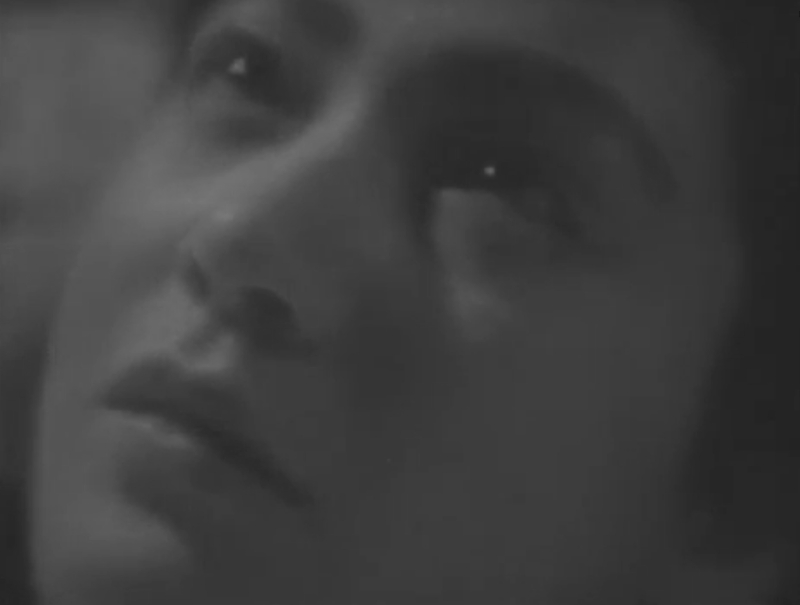Though little known today, there were attempts to export Japanese films to the foreign countries before Kurosawa’s “Rashomon“. Japanese film industry explored the possibility to show Shimazu’s film or young Setsuko Hara’s starring vehicle in various countries, from Asia to United States to Europe. They condescendingly ‘exported’ the films made in Japan to Manchuria, Korea and the other occupied territories. However, the attempt to export such films to Europe was a different matter. It was a competitive market saturated with highly sophisticated products. Especially, during the thirties, volatile European politics lowered the melting point of artistic borders, resulting in the unprecedented degree of collaborations among artists and creators. Keen eyes trained by Dadaism, Futurism, Expressionism and various modes of modernism would not be fooled easily. Then, what kind of Japanese films can make any impressions on such tough critics?

The article on Kinema Junpo (April 1, 1940) may give us some insight on this. According to Shiro Kawazoe (who frequently had visited Paris during thirties), only handful of the Japanese works had been shown in public, let alone accepted. One of the most successful among these Japanese films in the previous decade was “Crossroads (十字路, 1928)” directed by Teinosuke Kinugasa. Though visibly influenced by German Expressionism, particularly by “Das Kabinett des Doktor Caligari (1920)”, “Crossroads” is still filled with images —icons and symbols— of ‘Japaneseness’, which must have been welcomed by the Europeans. “Die Tochter des Samurai (新しき土, 1937)” was a German-Japanese co-production with two versions. The Japanese-German version was directed by Arnold Fanck, and the Japanese-English version by Mansaku Itami. The film was previewed in Paris, but deemed only acceptable if it had been edited down to something like a travelogue.
Kawazoe brought several films from Japan, including “A Passionate Poet, Takuboku (情熱の詩人 啄木, 1936)”, “La Symphonie pastorale (田園交響楽, 1938)”, “Children in the Wind (風の中の子供, 1937)” and “Five Scouts (五人の斥候兵, 1937)”. These films were screened for the group of selected clients for marketing purposes. Kawazoe had been looking for the opportunity to distribute Japanese films in France. It seems they had hard time making French-subtitled prints of these films and the preview screening was not as successful as they had hoped.
Jean Renoir and Germaine Dulac were among the audience and, according to Kawazoe, they weren’t impressed as much. “Ultimately, they (Renoir and Dulac) thought these films were childish” he grudgingly recalled.

Of these films, “La Symphonie pastorale” was received most favorable among French audience. The film was based on the novelette of the same title by André Gide, but the locale was transferred to Hokkaido. It was directed by Satsuo Yamamoto, and the blind girl was played by none other than young Setsuko Hara, who was 17 or 18 at the time. I assume Kawazoe and others must have considered French audience might be more receptive to “La Symphonie pastorale”, since it is, after all, based on the work by the French novelist and filled with Beethoven’s music. Surprisingly, André Gide himself saw the film and “went home very much satisfied”.
Today, the film looks hopelessly dated. It is over-melodramatic and actors behave like mechanical talking machines. There are too much emphasis on Hara’s close-ups. One redeeming point is cinematography by Yoshio Miyagawa. Miyagawa, who later became known for his work in Harakiri (切腹, 1962) and others, extracts and condensates serenity and tranquility from the world of snow-covered land of Hokkaido. Another curious bit is Hideo Saito, who conducts Beethoven’s Pastoral Symphony in the concert scene. This Western music pioneer in Japan was the mentor to many renowned musicians today, and Seiji Ozawa was his protégé.

I’m not quite sure if “La Symphonie pastorale” and other films were the best choice to showcase Japanese film to French people. On the other hand, I don’t think the other domestic products, such as Ozu, Mizoguchi, or Daisuke Ito for that matter, could be placed in the proper context by the Europeans (collectively) back then. There were always ‘unconscious differentiation’ and ‘imagined superiority’ even among the cultured class. As Kawazoe put it, Renoir and others were looking for ‘something different’, which doesn’t warrant they were ready to put things in the proper perspective. The same goes for Japanese elites at the time, too. Their interests in the other cultures were curiosity at best and shameless condescension most of the time. I wonder, looking at the old advertisement of the prewar Korean films in Japanese magazines back in 1930’s, how these films were viewed by those who considered themselves ‘literate’ in cinematic language.
Copyrighted materials, if any, on this web page are included as “fair use”. These are used for the purpose of research, review or critical analysis, and will be removed at the request of copyright owner(s).

